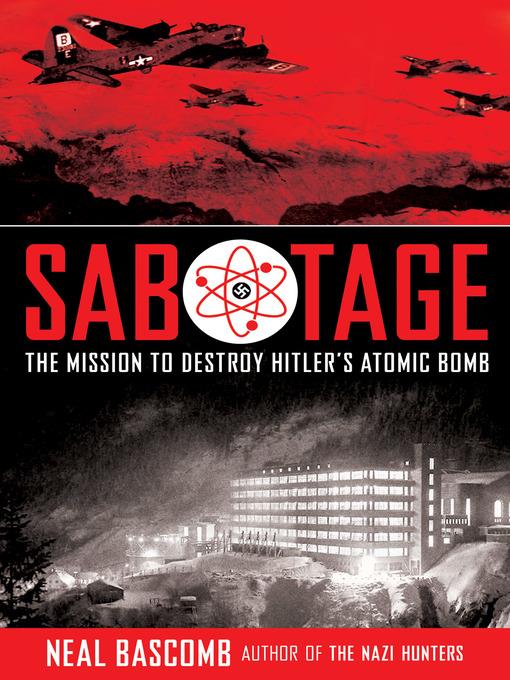
Sabotage
The Mission to Destroy Hitler's Atomic Bomb
فرمت کتاب
ebook
تاریخ انتشار
2016
Lexile Score
1070
Reading Level
6-9
ATOS
7.7
Interest Level
9-12(UG)
نویسنده
Neal Bascombناشر
Scholastic Inc.شابک
9780545735339
کتاب های مرتبط
- اطلاعات
- نقد و بررسی
- دیدگاه کاربران
نقد و بررسی

May 2, 2016
In a young readers' companion to The Winter Fortress, Bascomb offers a riveting account of Norwegian resistance efforts to prevent Germany from developing the atomic bomb by sabotaging a Norsk Hydro plant in Vemork, the world's sole producer in 1939 of "heavy water." Developing an explosive using nuclear fission depended on this critical ingredient, and on April 9, 1940âsoon after the Nazis' increased orders for heavy water were refused by Norsk Hydro's managementâGermany invaded and seized control of Norway's industrial sector. In response, Norwegian saboteurs trained in the U.K. to destroy Vemork's heavy water production, under the direction of the British Special Operations Executive and Capt. Leif Tronstad, an exiled Norwegian professor and well-connected informant. Bascomb's detailed narrative builds tension through each attempt, narrow escape, and comeback. Clear summaries of the science involved and the wartime interests of both the Allies and Germany accompany vivid descriptions of the principal participants and their motivations, the rigors of Norway's climate and terrain, and the risks calculated (and those unforeseen), producing a gripping account of individual and collective heroic effort. Ages 12âup.

April 1, 2016
An isolated factory in Nazi-occupied Norway is an important link in a plan to deliver a nuclear weapon for Hitler until Norwegian resistance fighters embark on a dangerous mission to stop it.The reach of Nazi Germany into Norway did not mean just another country for Hitler's domination; it also provided access to the "heavy water" that would allow the Third Reich to develop an atomic bomb. The stories of the Norwegian men who joined forces with the British to cripple the efforts at Vemork, an isolated but essential industrial fortress, are at the center of this story. Their dramatic first failure and the subsequent successful mission make for a harrowing tale. The impact of weather, near starvation, and communication difficulties contribute to page-turning tension. The fact that the first success slowed but did not stop Nazi efforts, requiring yet another mission, delivers even more for the unfolding narrative. In this young-readers adaptation of The Winter Fortress (2016), Bascomb successfully describes the story's technical details: the process of making heavy water and its importance in creating a nuclear weapon, the strategies to disrupt the process, and the weather and topography, which played such crucial roles in the mission's execution and the saboteurs' escapes. The book is enhanced by impressive supplemental material, including a helpful list of participants, photographs, maps, and an intriguing author's note. A rich, well-paced narrative. (bibliography, source note, photo credits, index) (Nonfiction. 12-18)
COPYRIGHT(2016) Kirkus Reviews, ALL RIGHTS RESERVED.

Starred review from May 1, 2016
Gr 8 Up-The people of Norway had hoped to remain neutral during World War II as they had in the Great War, but that hope was shattered when Nazi Germany invaded Norway's ports in the early days of April 1940. In addition to taking over Norway's land and exiling their king, Germany also intended to capture the hydroelectric plant at Vemork in Norway's frozen highlands. The plant was one of the only places in the world that produced a substance called heavy water, an extremely important ingredient in Germany's race to develop an atomic bomb. It would take the Allies several unsuccessful attempts before a time bomb planted on the ferry transporting the heavy water and production equipment across a deep lake spelled the demise of Germany's atomic research. Bascomb is a master of taking complicated histories and turning them into exciting works of nonfiction. By exploring the various backgrounds of each of the Norwegian resistance fighters and scientists, he gives readers a chance to understand their motivations and properly empathize with their struggles. This investment pays off as the stakes get higher, and the narrative deftly switches between their perspectives, creating a dramatic and suspenseful tension like no other. A generous amount of captioned black-and-white photos of the men, buildings, and artifacts help to guide readers through the text.
Copyright 2016 School Library Journal, LLC Used with permission.

May 1, 2016
Grades 8-11 The author of Nazi Hunters (2013) tackles another part of WWII in this crackerjack young reader's adaptation of his latest nonfiction work for adults, The Winter Fortress (2016). In 1940 in the midst of Germany's race to invent an atomic reactor, German physicists discovered the importance of heavy water, an isotope produced only at Vemork, a hydroelectric plant in newly Nazi-occupied Norway. As the Allies sought to halt Nazi atomic research, they turned their attention to Vemork, sending small teams of resistance fighters to sabotage the plant's operations. Relating the story in suspenseful prose with only occasional departures into stats and figures, Bascomb tells of the heroic teams of Norwegian and British resistance fighters who braved a harsh Scandinavian winter and harrowing bouts of hunger while lying in wait to carry out their plans. While the descriptions of the science behind heavy water might befuddle some readers, Bascomb's clear-eyed account of the thrilling mission and its many challenges, cast against the backdrop of WWIIand helped along by photos, maps, and diagramswill handily engage teens.(Reprinted with permission of Booklist, copyright 2016, American Library Association.)

























دیدگاه کاربران